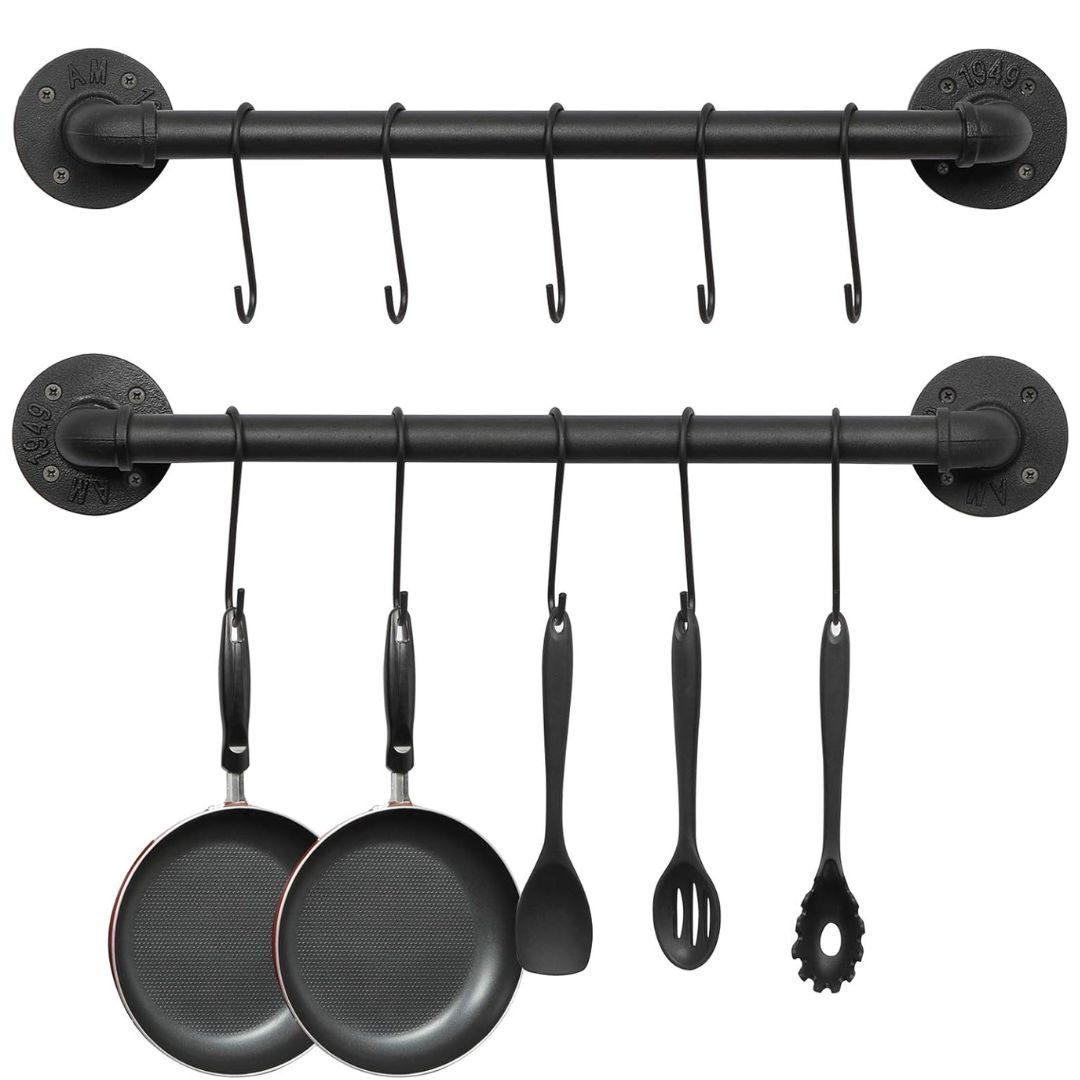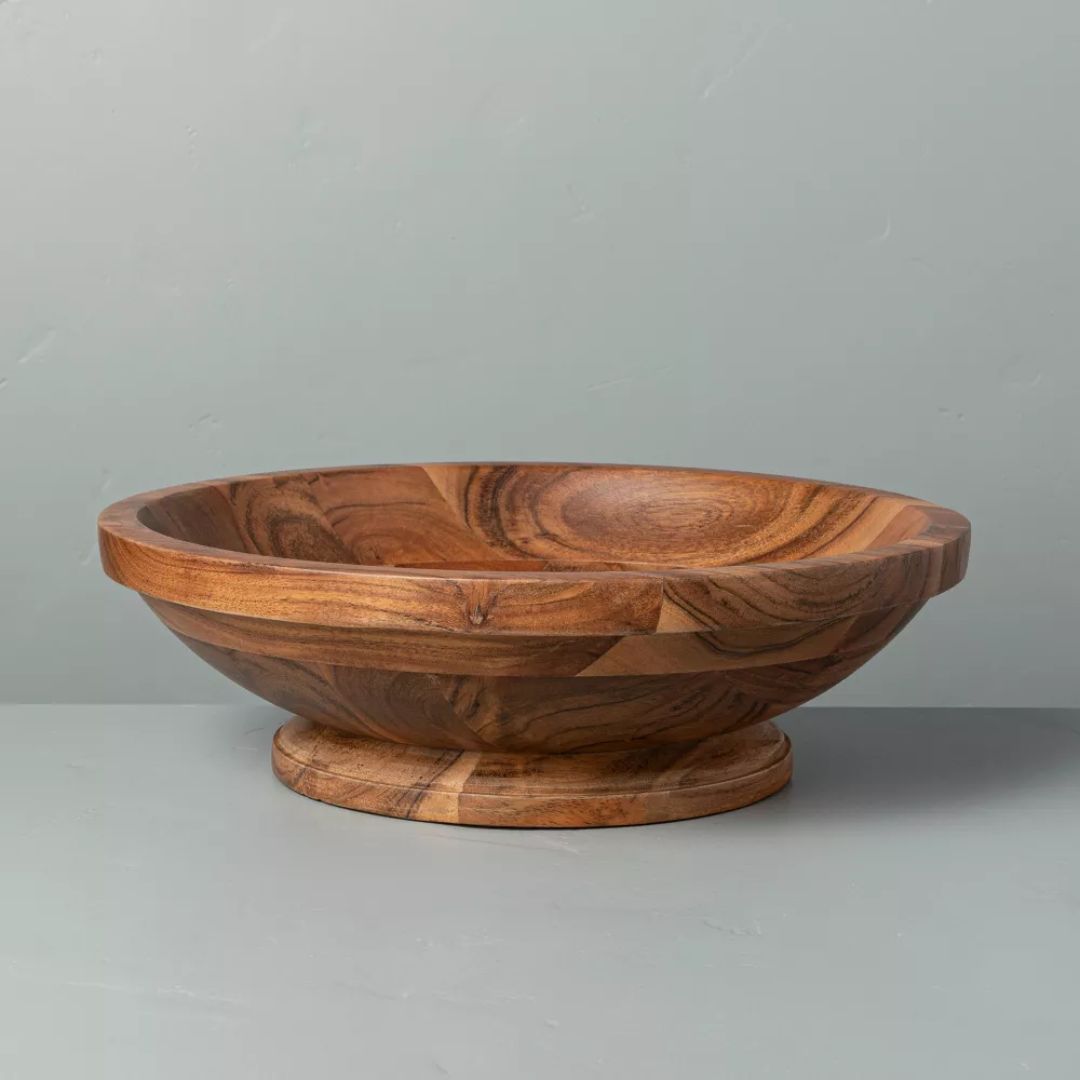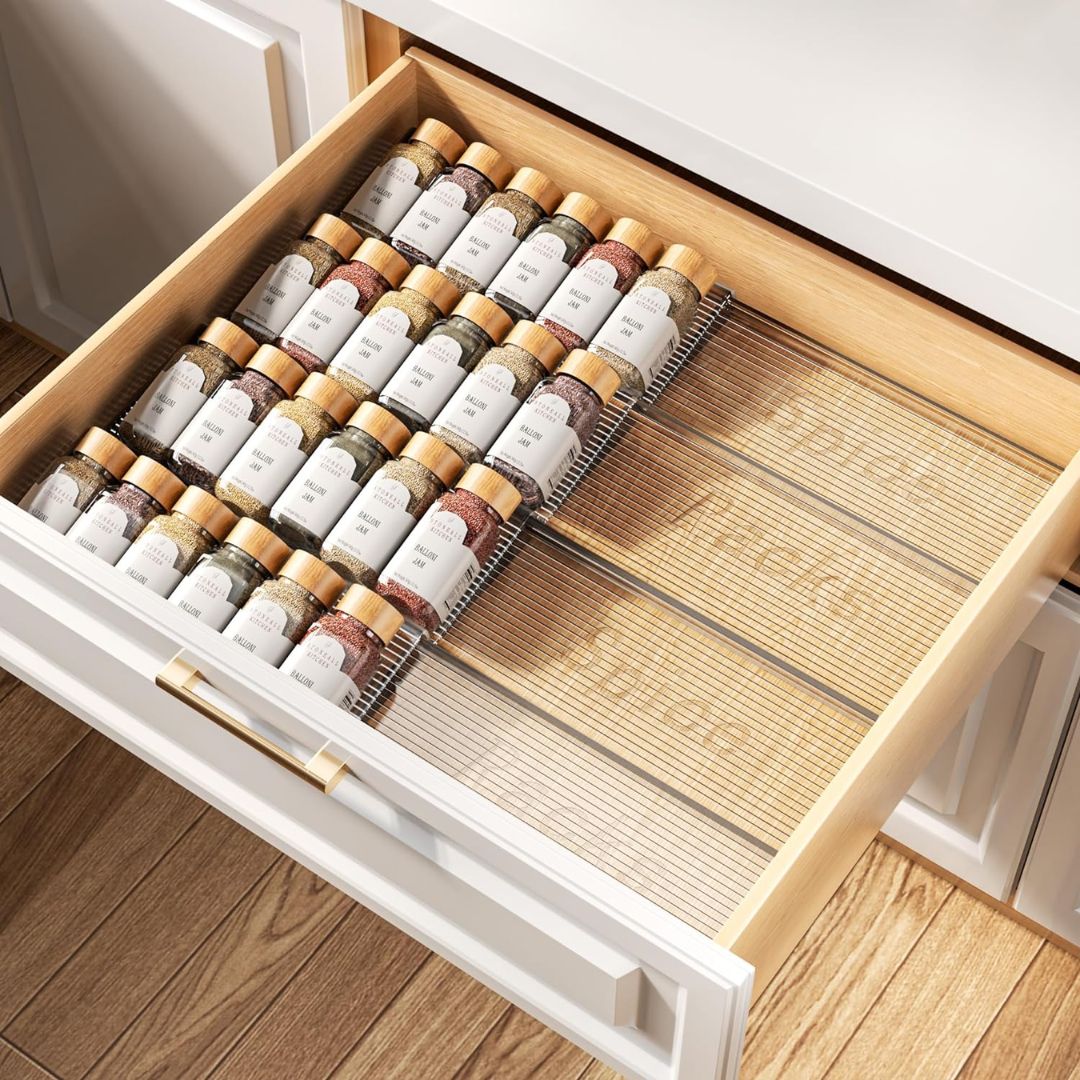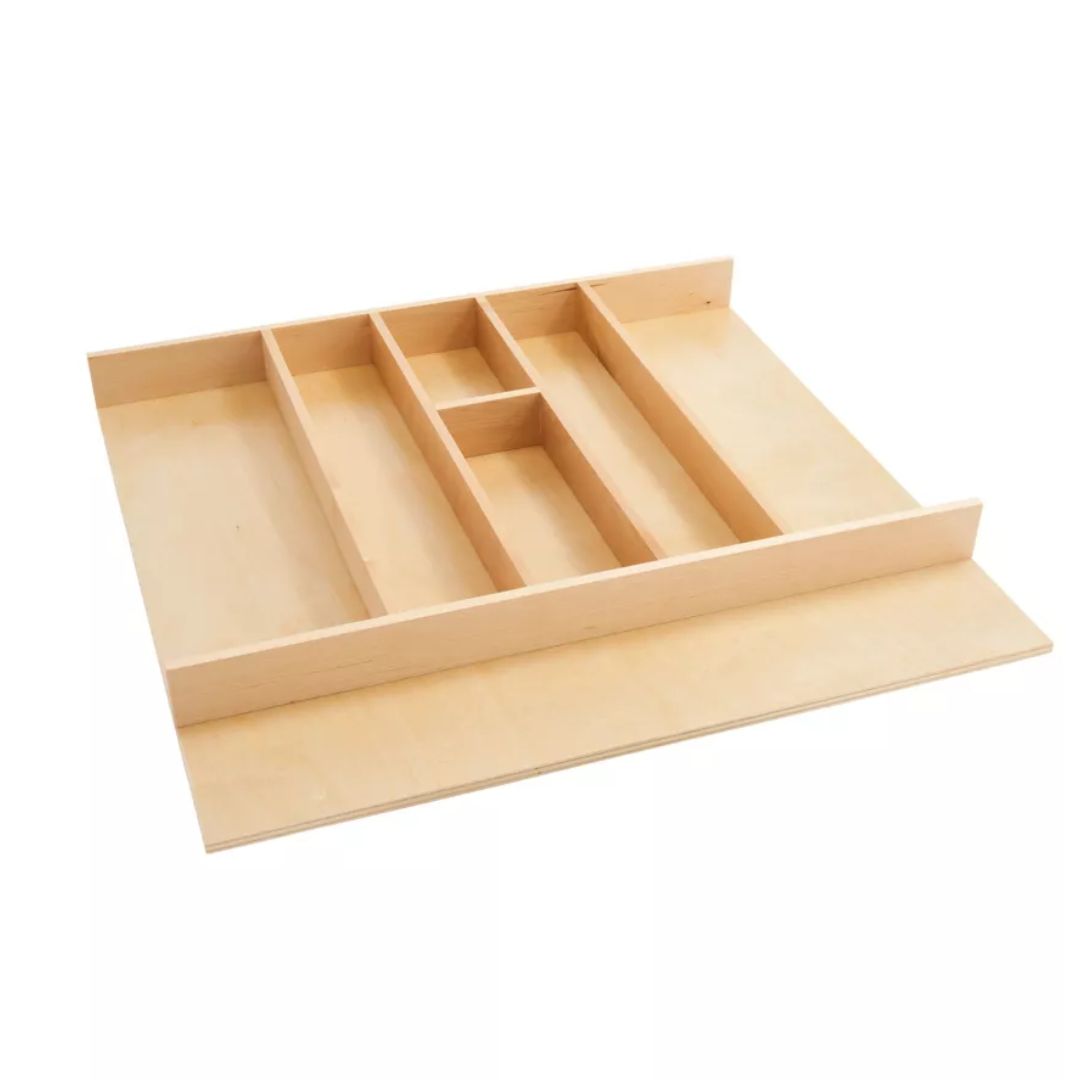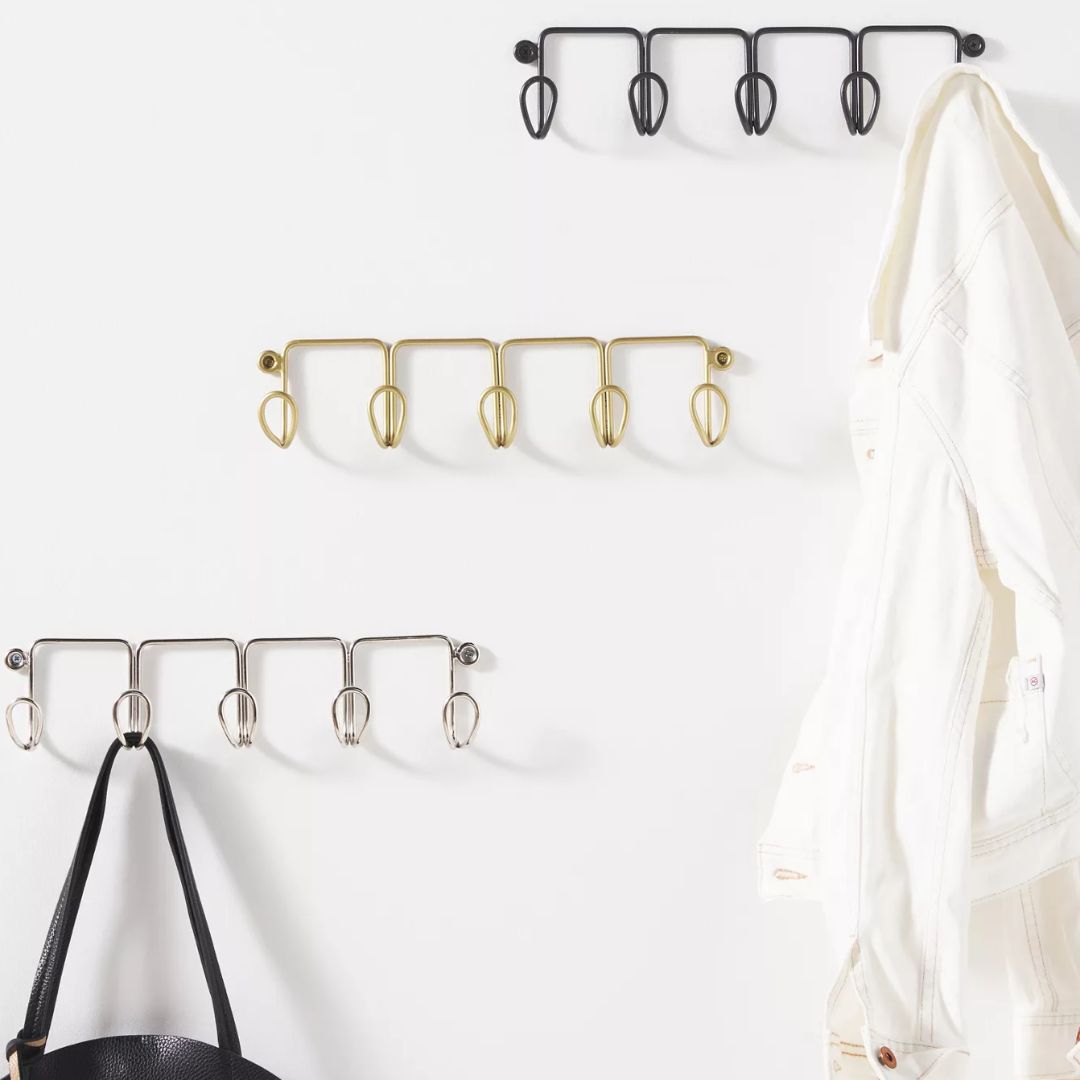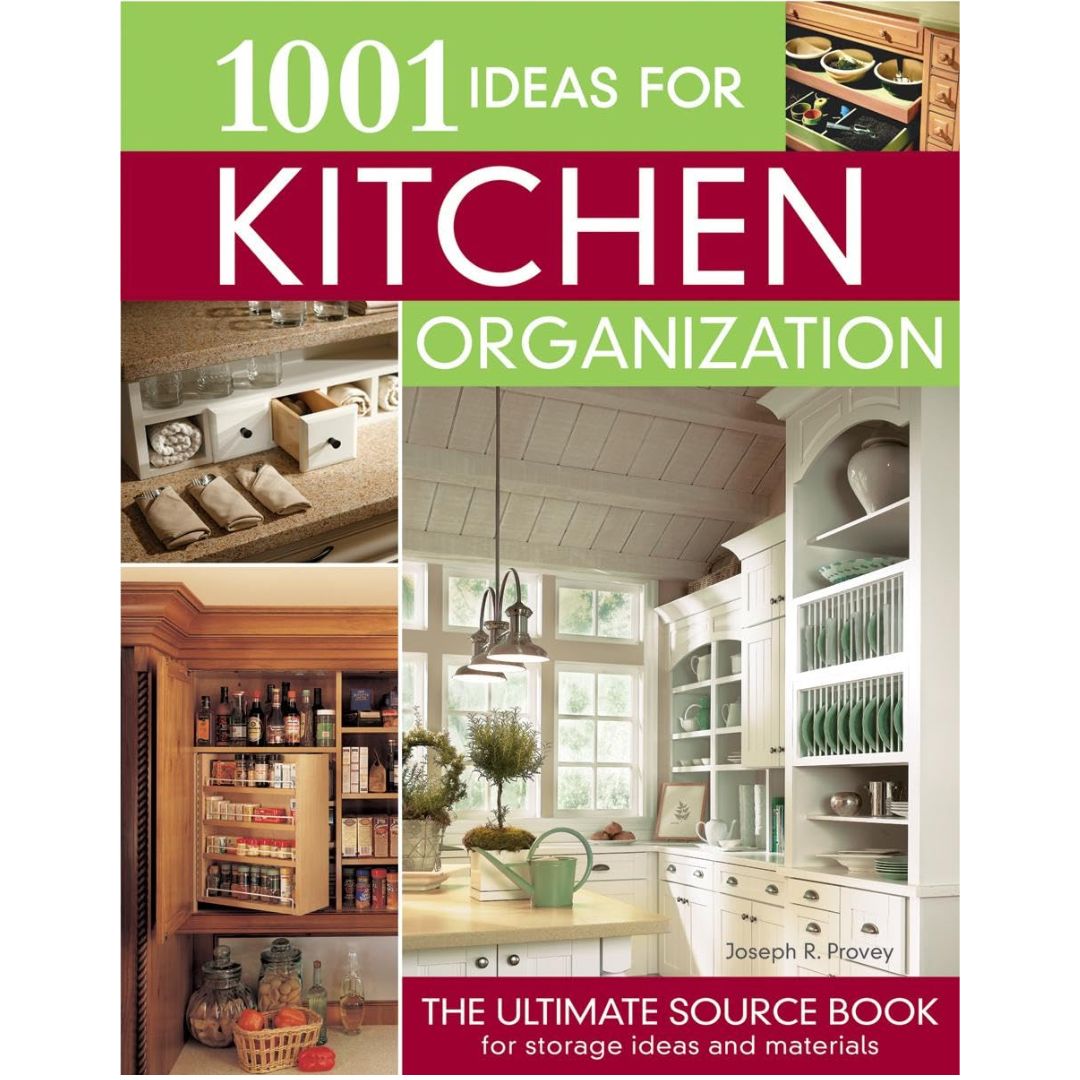How to Organize a Kitchen — 11 Simple Ways to Best Maximize Space and Clear Clutter
If you're trying to get your kitchen better organized, try following these steps from professional declutterers to get the most out of your space

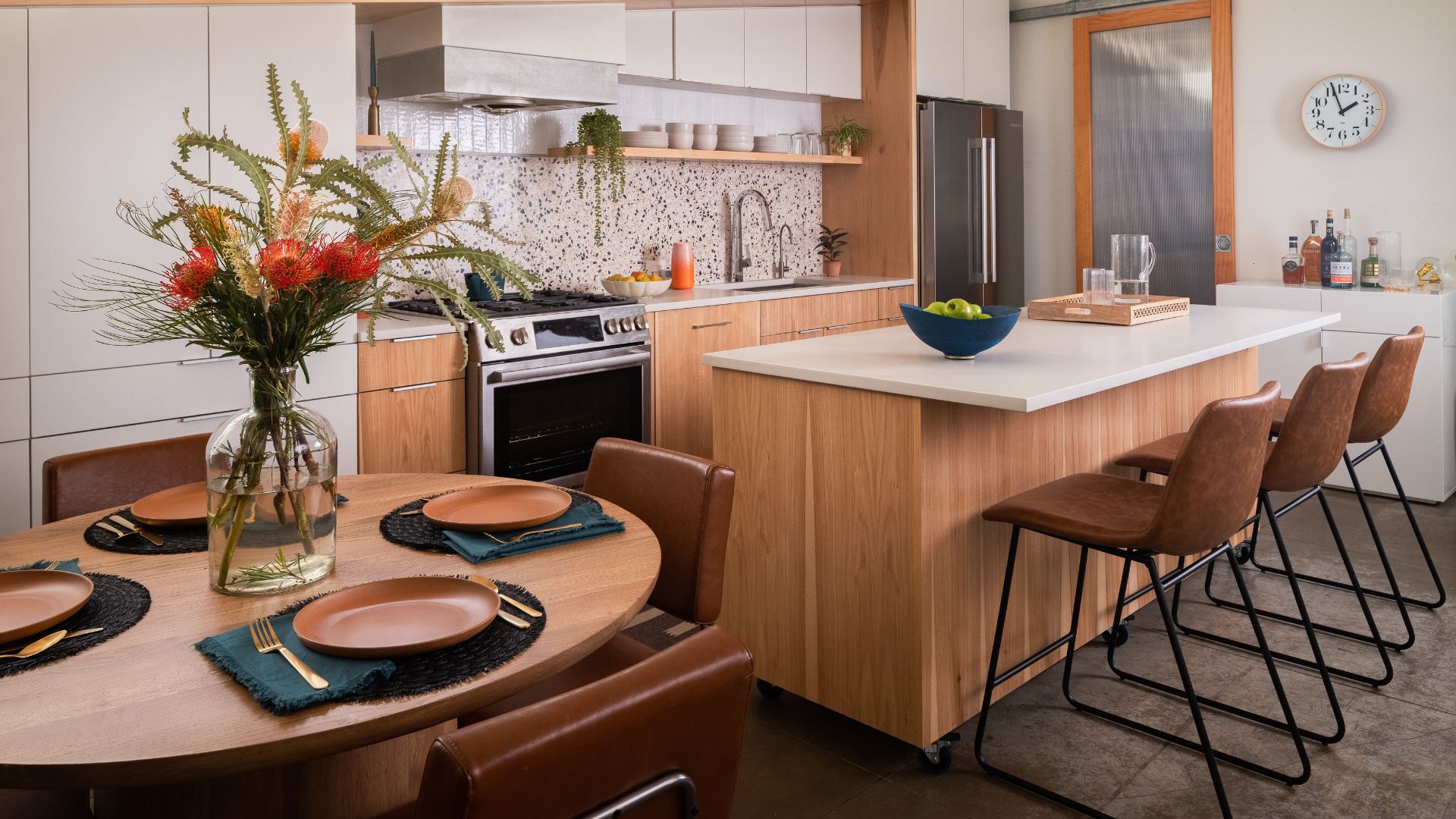
- 1. Organize by Category
- 2. Use Clear Containers for Dry Goods
- 3. Make Use of Vertical Space
- 4. Make Organizing a Routine
- 5. Have a Dump Zone
- 6. Maximize Storage in Your Drawers
- 7. Clean-As-You-Go
- 8. Use Dividers in Shallow Drawers
- 9. Divide Your Kitchen Into Zones
- 10. Place a Coat Rack in the Kitchen
- 11. Clean Out Your Cabinets and Drawers
- FAQs
Understanding how to best organize a kitchen is key when it comes to storing things away — from your fine china sets, to your snacks and must-have grocery essentials, everything needs its place. An organized kitchen will allow you to move through your space with ease
The kitchen is often used to prep, cook and clean, but this can only be done if it's been organized correctly. Diane Quintana, a professional organizer from DNQ Solutions, LLC tells us: "An organized kitchen is one which is easy to use. What I mean by that is that the accessories are housed in such a way that anyone, even someone unfamiliar with the space, can come in and find what they need."
So, how exactly do you organize a kitchen? Well, we spoke to a few expert organizers about what you can do to make the most out of your kitchen storage ideas.
1. Organize by Category
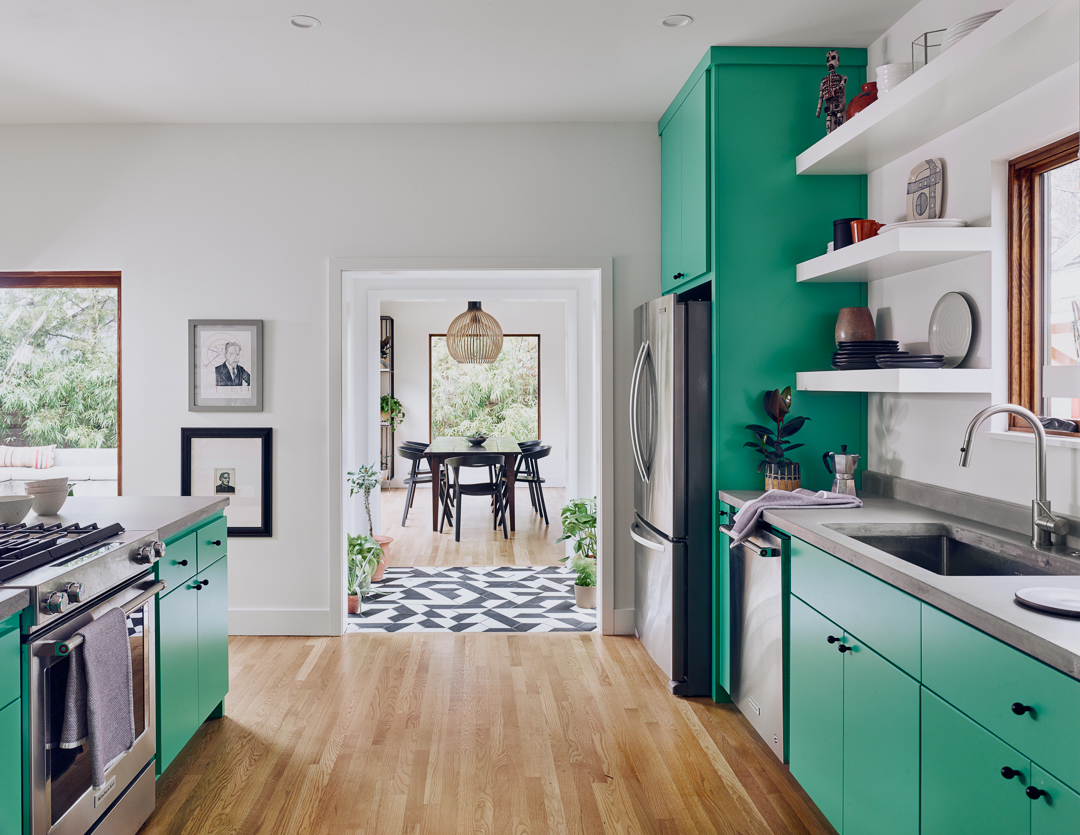
Want to know how to organize your kitchen in one day? Here's a secret... try categorizing the items in your space. The kitchen is a space where you wine and dine, hosts guests and prepare the finest of meals for yourself and your loved ones. So it's only right that you take care of it and keep it looking neat and tidy. I personally love categorizing items as it helps me locate even the smallest of items.
"Arrange your kitchen by categorizing items in proximity to each other," says James Lott Jr., an expert organizer, the founder of The Super Organized and podcast host of 'The SOS Show with James Lott Jr. "Store baking essentials in one spot and cooking tools in another. Designate a drawer, for snacks too to streamline item retrieval and minimize messiness," he adds.
Diane Quintana, a professional organizer from DNQ Solutions, LLC tells us another benefit of organizing by category is that it makes it easier to see how many of each item you have. "Ask yourself how many you will use at any one time," she notes. "If you are downsizing, consider keeping the bare minimum. If you have a busy family, you may want to keep two of some things."
2. Use Clear Containers for Dry Goods

For all your pantry organization ideas, using clear containers to store dry goods will certainly help organize your kitchen in an efficient manner. Clear glass containers are ideal for storing away your favorite snacks, pasta, cereal and so much more. I particular love this 4 Pack Airtight Glass Jars with Bamboo Lid and Spoons from Amazon that is currently on sale for $19.99.
The Livingetc newsletters are your inside source for what’s shaping interiors now - and what’s next. Discover trend forecasts, smart style ideas, and curated shopping inspiration that brings design to life. Subscribe today and stay ahead of the curve.
James tells us: "Organize your pantry by placing items like pasta, rice and flour, in labeled containers to easily view your inventory and keep it fresh and tidy, while recycling the original boxes they came in to maintain a neat space overall."
3. Make Use of Vertical Space
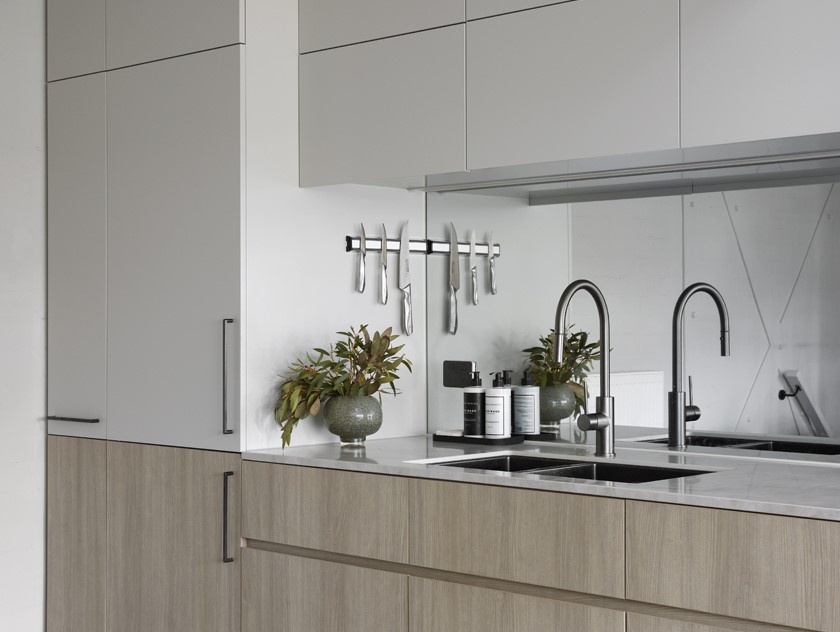
Making use of vertical space by hanging utensils or pots and pans will give you so much more from a small kitchen. "Set up hooks or magnetic strips on the walls to hang pots and pans as well as knives and utensils," James tells us.
Alternatively, the expert says you can consider using the inside of cabinet doors for storing smaller items such as measuring cups or pot lids. Another method that works well for compact kitchens.
4. Make Organizing a Routine

Think of organizing less as a one time deal, and more as a series of repeated processes. An idea such as the Sunday reset checklist helps turn it into a routine. It's something I implement into my life and I feel that it has given me a sense of control and understanding of my space.
And James seems to agree, he says making decluttering, pitching and organizing a routine will have a positive impact on you and your home. "Remember to tidy up on a basis keeping things organized and neat," he tells us. "Every month set aside some time to go through your kitchen belongings and remove anything that you no longer use or require."
James says when you're getting rid of items, you should consider donating or disposing of any duplicate gadgets or expired food items that are no longer of use.
5. Have a Dump Zone

Kitchen countertops are often victims of dump zones. Dumping everyday essentials such as keys, mail and other bits and bobs is undeniably something we all do, but James tells us you need to create a specific "dump zone" for all these little items as this will give you a chance to have a more organized kitchen.
"Set aside a space, in your kitchen for things that often accumulate there such as mail, keys and reusable bags to keep clutter at bay — after all, a little mess is just part of everyday life," he notes. "Know it's realistic to have some clutter."
6. Maximize Storage in Your Drawers

Make the most out of even small spaces and take your time to learn about where to put things in your kitchen cabinets and drawers. According to James, the best way to organize a kitchen is to maximize storage in your drawers. So, how exactly do you do this?
Well, the expert says: "Organize your kitchen utensils and spices using drawer dividers or organizers to maintain order and functionality in your kitchen space." You can do this by creating "individual drawers for cutlery tools and cooking essentials while reserving another drawer specifically, for spices and herbs."
7. Clean-As-You-Go

It can be tempting to leave the dishes in the sink after tiresome day of work and cooking, but James says that it is important to tackle the mess as soon as possible before it piles up. It's time to organize dishes in a kitchen and clean-as-you-go!
"It's proactive to tidy up while you're cooking. Wash dishes, wipe down surfaces, and put away ingredients after using them" James suggests. He says this will help prevent the mess from accumulation and in turn "makes cooking easier, keeps your kitchen better organized and more manageable." The expert adds: "I refuse to bed with a sink piled high from a day's worth of dirty dishes, cups, pans and utensils."
8. Use Dividers in Shallow Drawers

When it comes to how to organize your kitchen drawers, professional organizer Diane Quintana, recommends using dividers for those shallow drawers. This is a great way to keep all your dining essentials organized and in place. Organizing your drawer will make hosting a whole lot easier, trust me!
"Use dividers in shallow drawers to hold utensils," says Diane. "If you like them, get a large holder (can be a pottery jar) to sit on the counter for your wooden spoons, spatulas, whisks and things like that." Otherwise, the expert says you can dedicate a drawer for these.
9. Divide Your Kitchen Into Zones

Zones are just one of the things you'll find in super organized kitchens. Dividing your space into zones will allow your to locate things that you need, throw things away as well as store things in the right place.
Barbara Brock, professional organizer at Barbara Brock Inc. — a Professional Organizing & Staging Company says, zones are the key to an organized kitchen. "An organized kitchen is divided into zones — they have the essential cooking oils and spices near the stove area; and pots and pans and utensils as near the cook top or stove as possible zone," she notes. "Prep zone needs a counter and can be somewhat in between a stove and sink. All prep is mixing and cutting so, some of prep will go into the stove and some will be garbage."
As for cleaning zones, Barbara suggests you peel a sheet of wax paper or plastic wrap and cover the counter. She adds: "Regardless of what you are going to use — a cutting board, mixing bowl or slicer, there will always be spillage onto the counter. When finished the prep, roll up or gather the wax paper or plastic wrap with left over foods and dump into trash bin.
The expert continues: "I prefer a pullout trash bin under the sink if you aren’t able to plan for a designated pullout trash bin. At the very least, have a small container on the kitchen counter to place bits or have a trash can as near the sink as possible."
10. Place a Coat Rack in the Kitchen

A perfect way to use vertical storage would be to add a coat rack into the kitchen. Now, hear us out — if you need a place to store your reusable shopping bags and your go-to purse, this may just be the best solution.
And Barbara seems to agree. The expert says it is "another creative organizing product to utilize in a kitchen." She adds: "I’ve experience that many people collect bags — shopping bags, gift bags, all kinds of paper bags. Bags come in multi-sizes. A neat way to store them is to hang them on coat racks."
The professional organizers says when installed on a wall at different levels, you'll find that it is easy to grab and go. "Coat racks can be used to hang cleaning mops, brooms, and anything that needs to be hung up," Barbara notes.
11. Clean Out Your Cabinets and Drawers
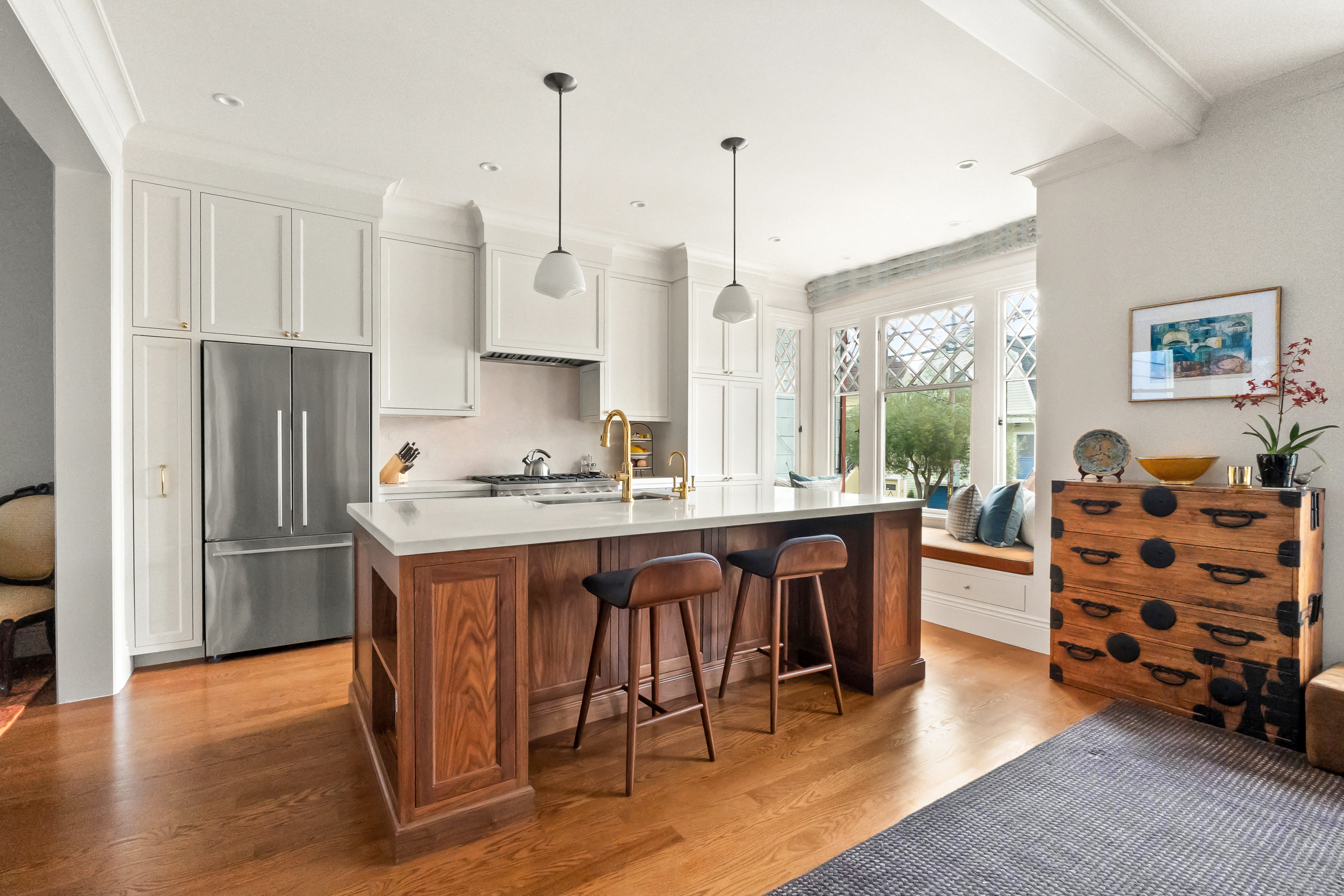
It's time to effortlessly reduce visual clutter in the kitchen, and the best way to do that would be to clean out those messy cabinets and drawers at least once a year. Your essential items drawer can easily turn into a junk drawer if it's not maintained, so ensure you check in with your space and see how it's being kept.
"Once a year make it a priority to clean out your cabinets and drawers," says Diane. "I suggest doing this over the course of a couple of weeks or a month, working on it a little at a time so you don’t overwhelm yourself by the enormity of the task — and so you make thoughtful decisions about what you’re keeping and where you’re keeping it."
Want to know how to do this effectively? Well, Diane says you should first "decide where you’re starting and create some rules for yourself. I always suggest removing and discarding anything that is chipped or broken. And removing and donating anything you haven’t used in more than a year."
Start by emptying the cabinets one at a time. Then remove everything from that cabinet. "Wipe the shelves, the cabinet door (inside and outside), and clean the knob or handle," Diane adds. "Decide what you’re putting back. Keep the things used most frequently on lower shelves and the things only used occasionally on higher shelves."
FAQs
How do I organize my kitchen clutter?
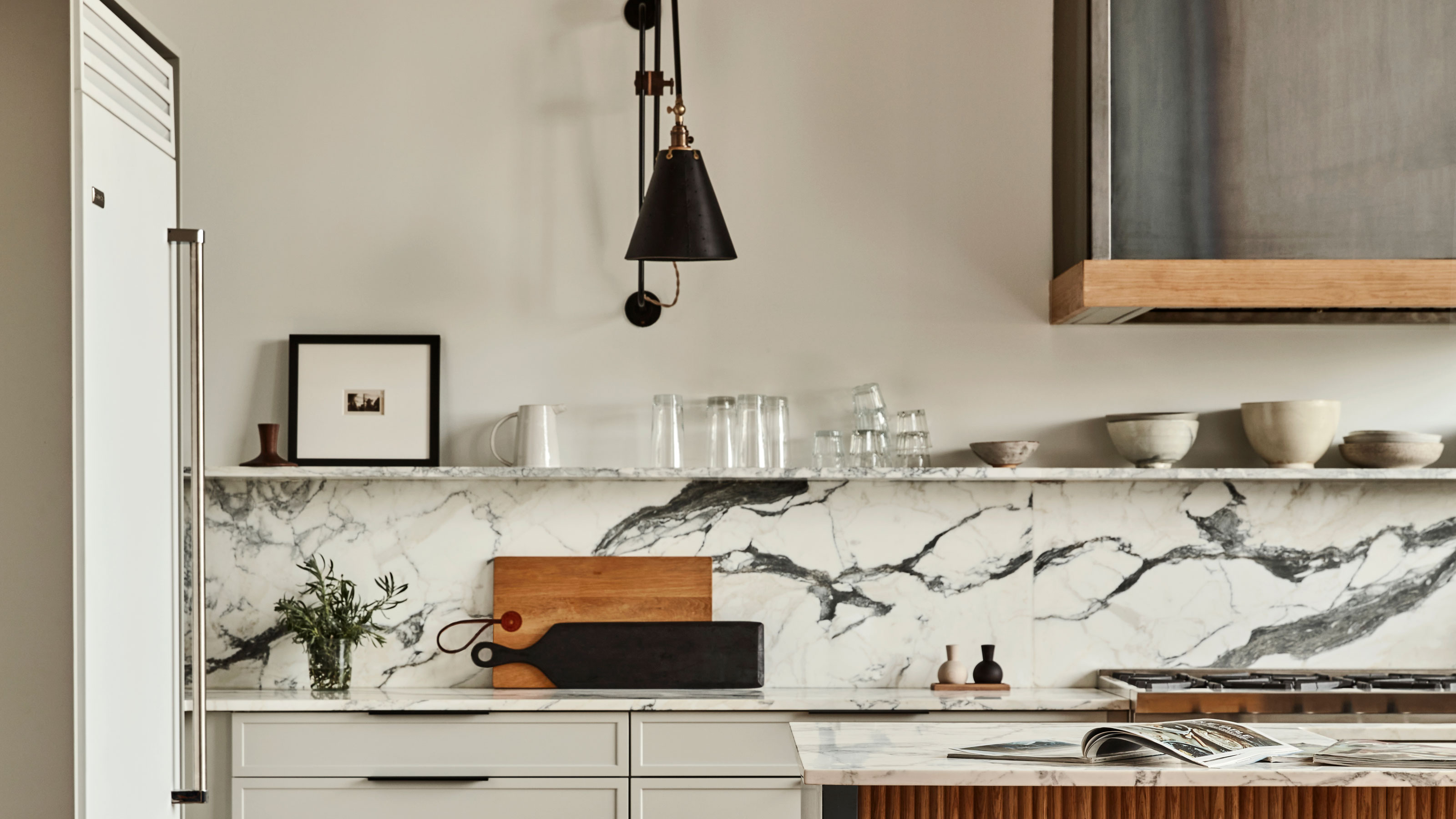
Whether you want to know how to declutter kitchen countertops or simply want to organize spots around your cooking area, Diane says the best method for this is to do the following:
Have an organized junk drawer: Diane says there is no excuse for not keeping your junk drawer organized. "Everyone has a junk drawer. There’s no reason it can’t be organized," she notes. "Use dividers or small containers for things like batteries, tape, paper, pencils and so on."
Place a basket or tray on the counter: This is a great way to keep things that may not belong in the kitchen, but seem to find their way there. The expert says: "Have a tray or shallow basket on the counter to corral things like mail, paper, and other things which generally don’t belong in the kitchen. Create a habit to empty the tray or basket at least once a week."
Install a pull-out shelf: Want to know how to make kitchen cabinets more accessible? Why not add in a pull-out shelf. "Hidden corners can be very difficult to organize because things get lost in that space," says Diane. "Consider installing a rotating pull-out shelf. Home Depot and Wayfair have a selection of these from which to select."
Let go of items you no longer need: When decluttering and organizing, there are a few things to let go of and that includes things that are no longer of use to you or your space. Diane says: "Always ask if you need, use, or love the things you bring into your kitchen. If you’re not using it, don’t need it, or don’t love it remove it from your home. Let someone else have the benefit of that item."
What is the most efficient way to organize a kitchen?
According to Diane, the most efficient way to organize a kitchen it to "store the things you use most often on lower shelves or in deep drawers and the things you use only on special occasions on the higher shelves."
She continues: "The other thing to think about when you are placing items in a kitchen is where you will use them." For example, the expert says place a coffee pot on the counter, near a sink, so that it's easier to fill it with water. Another example would be to place small appliances that you do not use often in the cupboard or on a shelf in the pantry.
Check Out These Kitchen Organization Books

Faiza is the Renovation Editor at Livingetc. She previously worked for The Independent as a News Feature Writer, where she crafted lifestyle, entertainment, and news stories. She also worked as an Audience Editor for the newspaper for almost two years. Thriving in the busy newsroom, Faiza also spent her time crafting stories for Sky News as an SEO reporter, where she produced stories based on trending topics. Lifestyle and interior design have been areas of interest for her for some time, and as she advances in this field, she will continue to refine her skills in all aspects of design. Faiza has a background in SEO, social media, and reporting. Her passion for writing goes beyond her work as she loves all things poetry and creative writing.

